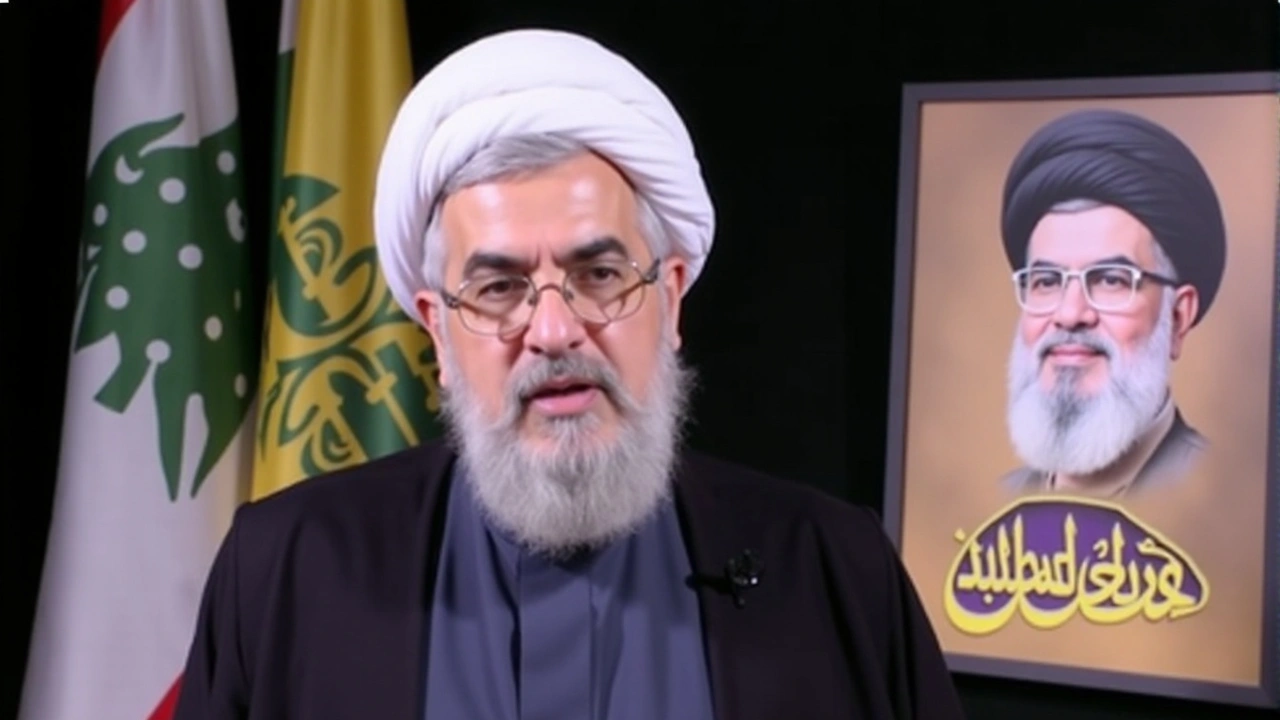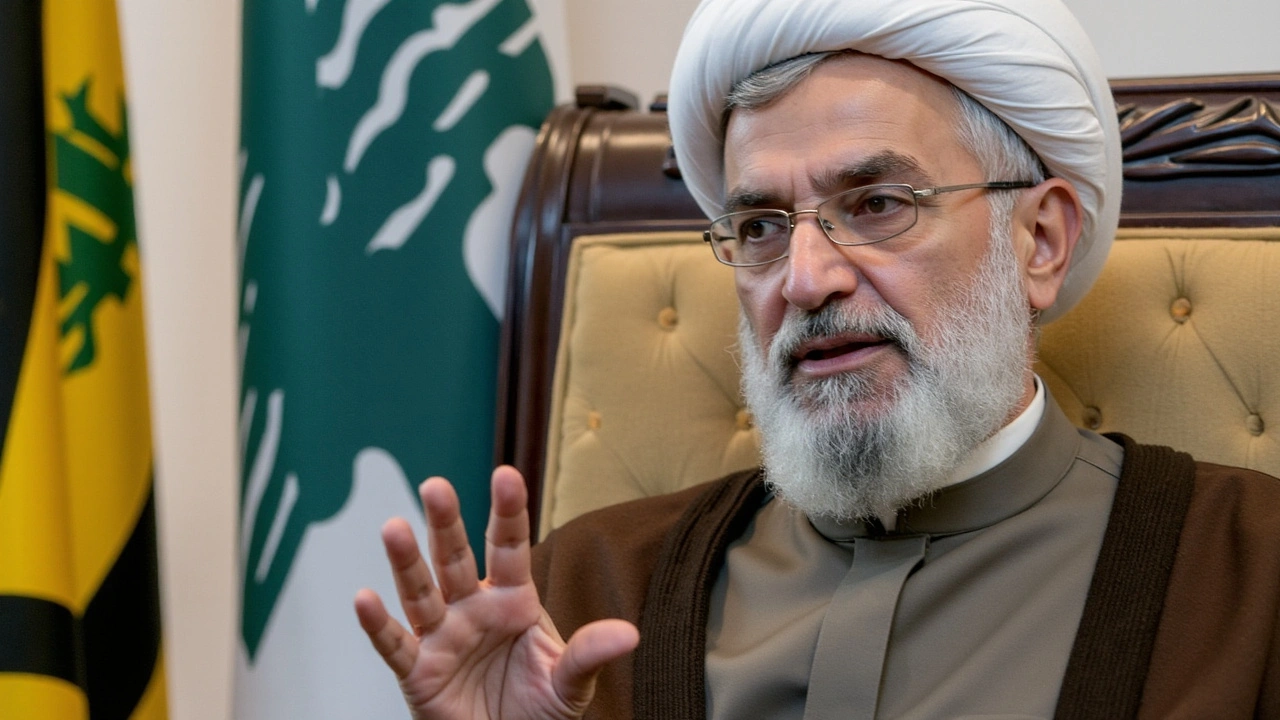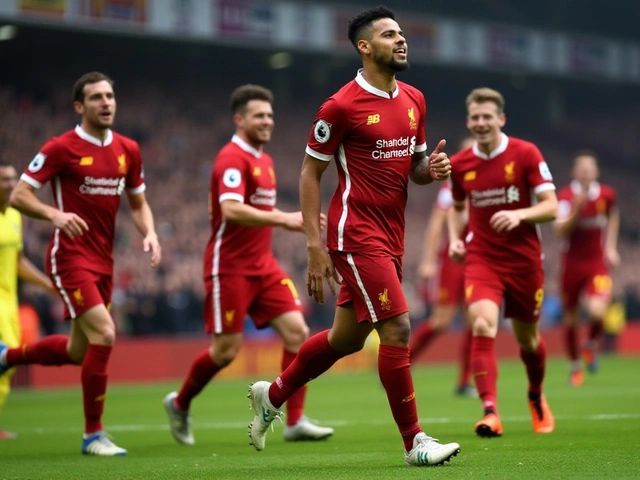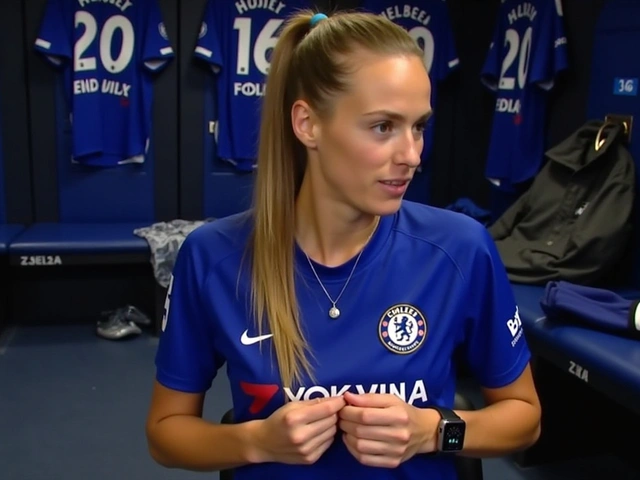Lebanon's Hezbollah Leader Naim Qassem Vows Continued Opposition Against Israel

Hezbollah's Leadership Transition
As Lebanon's Hezbollah ushers in new leadership under Naim Qassem, the organization's dynamics and strategy in its enduring conflict with Israel promise to evolve. Qassem's ascension follows the impactful leadership of Hassan Nasrallah, under whom Hezbollah bolstered its military and ideological presence in the region. The transition of power comes at a volatile time, as tensions have seen an alarming increase, compounded by Israel's ongoing military activities in Gaza.
Naim Qassem, a stalwart within Hezbollah, has vocally committed to continuing the group's aggressive posture against Israel. His assertion of a 'new strategy' marks a potential shift in tactics, aimed at maximizing pressure on Israeli defenses. Despite this, Qassem acknowledges a preference for peace, if such a resolution can be achieved. Modern warfare within such a complex geopolitical landscape requires deft diplomacy alongside military readiness, a balance Qassem seems determined to strike.
The Current State of Hostilities
The current escalation between Hezbollah and Israel is not isolated but intricately tied to the broader Middle Eastern conflict, especially the situation in Gaza. Hezbollah's support for Gaza remains firm, as reiterated by Qassem, linking the Lebanese and Palestinian fronts unequivocally. This alignment has caught the attention of both local and international stakeholders, as it synchronizes regional tensions in potentially destabilizing ways.
The impact on civilians cannot be overstated. Thousands on both sides of the conflict have been displaced, their lives uprooted by the incessant hostilities. Israeli civilian and military casualties have risen, with significant losses echoed by Hezbollah. These human costs underscore the need for diplomatic engagements, a sentiment that is slowly gaining traction on the global stage.
Israel's Strategic Response
Israel's government views the situation with grave concern, particularly the increased threat along its northern border with Lebanon. The war cabinet has convened on multiple occasions to discuss the ongoing conflict with Hezbollah, stressing the precariousness of the current situation. Israeli government spokesperson David Mencer has been candid, labeling the hostilities as 'unsustainable,' a sentiment that reflects the pressing need for a ceasefire or political solution.
Meanwhile, Israel's military strategies involve reactive measures against Hezbollah's provocations, including targeting military posts and infrastructure linked to the group. These actions, however, come with the risk of further inflaming the conflict, creating a cycle of retaliation and response that complicates any form of resolution.
Efforts Towards Peace
Amid the conflict, efforts to decrease tensions are notably at play. Diplomatic talks, albeit slow and fraught with challenges, aim to establish a more stable border arrangement between Israel and Lebanon. Such efforts are spearheaded by a mix of international entities eager to avert a broader regional conflict. The proposal for a land border agreement hints at a slim but tangible hope for de-escalation.
Understanding the multifaceted nature of this conflict requires acknowledging the historical grievances that fuel these hostilities. Any successful diplomatic resolution must address these roots while considering the immediate humanitarian needs of those affected. Ultimately, the path to peace involves negotiation, compromise, and a willingness to recognize the complexities of both contemporary and historical issues.

The Human Cost and The Way Forward
The human cost of the conflict is undeniable, with mounting fatalities and communities torn apart. On a broader scale, Hezbollah's newfound strategy, as outlined by Qassem, includes leveraging technological advancements, such as drone deployments, to enhance their military capabilities against Israel. These technological shifts illustrate an evolving battle landscape that poses new challenges for both parties.
On the Lebanese side, the civilian population suffers under the shadow of potential Israeli retaliation, while similar fears grip those living in the northern regions of Israel. The need for a sustainable peace is evident, not just for strategic stability but for the humanitarian imperatives at stake.
Moving forward, much hinges on the diplomatic endeavors that are being pursued. As negotiations progress, all eyes remain on Naim Qassem and Israel’s leadership to see if the rhetoric of war will finally give way to a genuine pursuit of peace—an outcome that would reduce the human suffering and offer a glimmer of normalcy for those embroiled in this seemingly unending conflict.






Jared Greenwood
October 30, 2024 AT 20:42Hezbollah’s threat to Israel is a direct challenge we cannot ignore.
Sally Sparrow
October 31, 2024 AT 10:35The rhetoric surrounding Qassem’s “new strategy” is nothing more than a veil for continued militancy.
Hezbollah’s institutional memory is steeped in a doctrine that glorifies perpetual conflict, not peace.
Any claim of diplomatic overtures is immediately undermined by the group’s procurement of drones and rockets.
The regional power calculus shows that Tehran’s backing incentives escalation rather than restraint.
Israel’s northern frontier has already been saturated with intelligence indicating pre‑emptive strike planning.
The humanitarian fallout from such posturing is quantifiable in displaced families and shattered infrastructure.
Western media’s tendency to homogenize the narrative obscures the nuanced agency of local actors.
Yet the underlying motive remains clear: to leverage Lebanon as a bargaining chip against Israeli policy.
The historical grievances cited by Qassem are selectively invoked to justify contemporary aggression.
Diplomatic channels, however fragile, are being choked by the influx of external armaments.
The ceasefire talks that briefly surfaced last month have been stalled by renewed artillery fire.
Analysts with a long‑term perspective recognize that without a credible disarmament framework, any peace is temporary.
Moreover, the internal Lebanese political fragmentation hampers unified state responses to Hezbollah’s agenda.
The international community must therefore impose stricter sanctions on the supply chains that fuel this conflict.
Only through a coordinated, multi‑layered approach can the cycle of violence be broken.
Eric Yee
November 1, 2024 AT 00:28Qassem’s talk of a new approach feels like the same old song with a different beat The group’s tech upgrades are impressive but also scary People in the north are just trying to live their lives and now have to watch drones overhead It’s a reminder how quickly a tense standstill can turn into a flashpoint Hope for calm but reality is messy
Sohila Sandher
November 1, 2024 AT 14:22We can all hope for a brighter future for the kids on both sides. Even small steps can add up to big change.
Anthony Morgano
November 2, 2024 AT 04:15Seeing the latest statements from Qassem makes me think about how quickly narratives shift 😊.
The focus on drone tech shows a modern twist on an old conflict.
Still, the core issue remains the same – security for all communities.
If diplomacy can find a middle ground we might finally see a break in the cycle.
Holly B.
November 2, 2024 AT 18:08I appreciate the thorough analysis presented above and concur that external pressures exacerbate the situation.
Lauren Markovic
November 3, 2024 AT 08:02For anyone tracking the cease‑fire talks, the latest UN brief notes a tentative framework being drafted – stay tuned 😃.
Kathryn Susan Jenifer
November 3, 2024 AT 21:55Oh great, another “new strategy” that probably means more fireworks for the front‑line tourists.